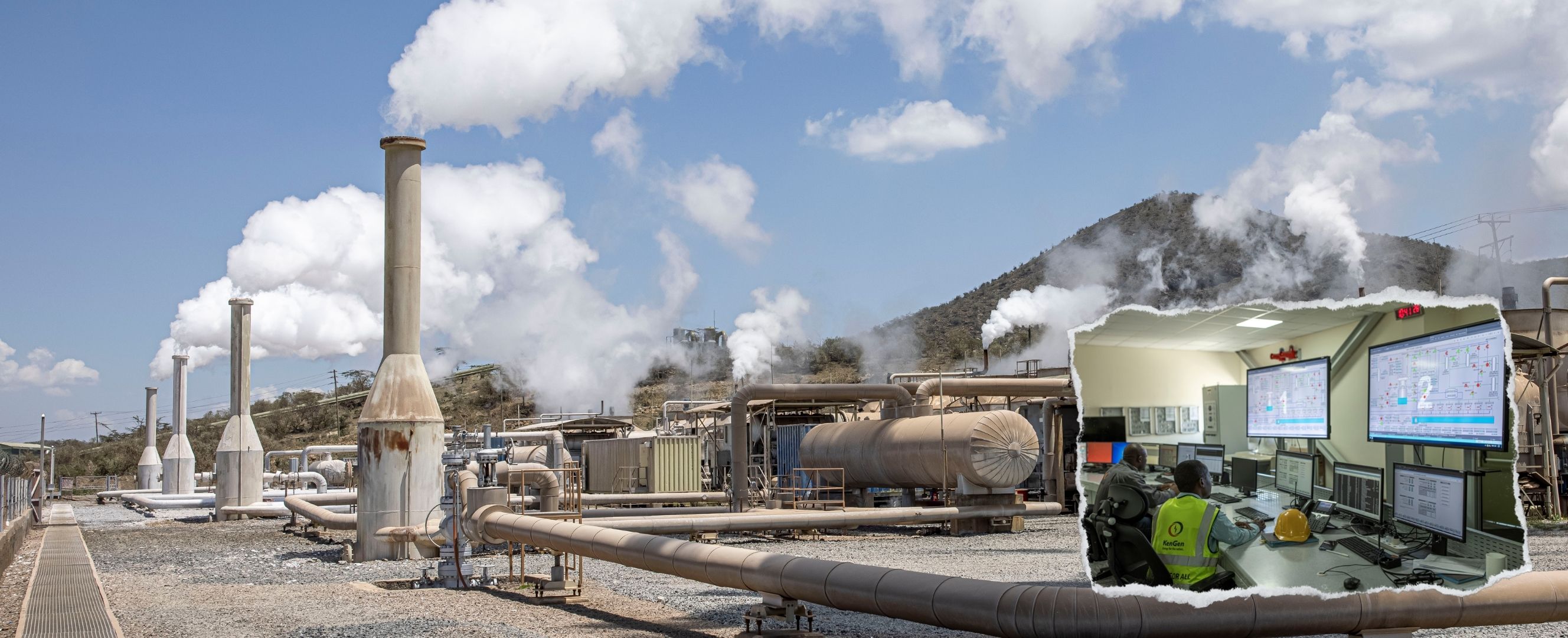The country’s geothermal industry has the potential to power much of the country
For many visitors, Hell’s Gate National Park in Kenya triggers an uncanny sense of déjà vu. Much of the 1994 film The Lion King was inspired by the park, and thousands of tourists still come every year to see the rugged cliffs that gave rise to the childhood classic. But three decades on, the park is becoming famous for something far below the surface.
Hell’s Gate, which lies about 50 miles northwest of the capital, Nairobi, is the center of a renewable energy revolution in the east African nation. All around, steam billows out of vast geothermal plants, and water pipes snake across the bush, past herds of giraffes, buffalo, and gazelles.
One of two people in sub-Saharan Africa has no access to electricity, and some large economies—such as Nigeria and South Africa—rely heavily on fossil fuels to supply their booming populations. But Kenyan engineers say that on a good day, about 95 percent of the national grid’s power comes from renewable sources, with anywhere from a third to half of that coming from geothermal wells.
“It is something the world can learn from us. It is possible to move towards green energy, to reduce the carbon footprint and make the world a better place to live and for future generations,” says Peketsa Mangi, general manager of geothermal development at the government-run Kenya Electricity Generating Company (KenGen).
Kenya is the world’s seventh top producer of geothermal energy. Part of its success comes down to its geography. The country of 53 million people lies in the Great Rift Valley, a series of geographic trenches and lowland areas spanning 4,300 miles from Lebanon to Mozambique.
Africa is slowly breaking apart along this fault line as the tectonic plates move away from each other, and scientists think that there will be a new ocean running through this area in some 5 to 10 million years.
But for now, the Rift Valley area in Kenya is an incredibly cost-effective place to harness the Earth’s heat. On average, engineers around the world need to drill down about 3,000 to 4,000 meters to make a geothermal well, but some wells in Kenya are only 900 meters deep, says Mangi.
Still, Kenyan companies like KenGen must pay major up-front costs. It takes roughly K Sh 600 million ($5 million) to drill one well in the area around Hell’s Gate, with an average 5 megawatt (MW) potential. You need about 20 to 30 of those wells for a 140 MW power plant.
Taking the lead
Renewable energy has been a priority for the government since the 1990s. Kenya already boasts the largest solar project in the region and the largest wind project on the continent. Engineers say they are developing the largest geothermal plant on earth, Olkaria VI, in Hell’s Gate.
The country has exploited close to 950 MW of geothermal energy so far, enough to power about 3,800,000 homes, through a combination of state and private commercial projects.
“A developing country having close to 90 percent of renewable energy power generation is quite unique,” said Tobias Rasmussen, IMF resident representative in Kenya. “Renewable energy has the potential to be a major growth driver for Kenya going forward.”
The new president, William Ruto, has pledged to keep developing this geothermal capacity and move to 100 percent clean energy by 2030. The government estimates there is 10,000 MW of untapped geothermal energy, enough to power Kenya’s current peak demand five times, spread out across two dozen sites in its Rift Valley region.
Experts say that this is helping Kenya to develop in several ways. “You have no emissions with geothermal. That enables Kenya to access cheap climate finance to pursue its own development agenda,” says Henry Paul Batchi Baldeh, director for power systems development at the African Development Bank.
“Geothermal contributes to power generation. The more you electrify your country, or you give people access to clean cooking alternatives, the more you find deforestation and charcoal burning declines,” continues Baldeh. “That obviously helps women in particular and improves their health and livelihoods.”
Kenya is now exporting its technology and know-how across the region. “We’re in Ethiopia and Djibouti providing technical support for drilling. But we’re also looking at providing surface studies to other countries, like Rwanda and Comoros,” says Mangi.
Displacement
However, it is not a completely rosy picture. Indigenous populations and rights groups allege that many of Kenya’s renewable energy projects are blighted by abuses and land grabs. People interviewed in communities around Hell’s Gate allege that officials and geothermal companies preyed on their illiteracy, isolation, and lack of colonial-era legal documents showing that they owned the land.
"The geothermal companies took the ignorance of the communities here and used it,” said one 40-something goat herder from Narasha, a village of about 500 people near one of the geothermal plants. “It was [ethnic] Maasai land. We didn’t get anything."
KenGen reported “good working relations” with the surrounding communities and that it had even built houses for those it resettled and given local people jobs. Locals disagreed with this statement. “We have geologists, we have engineers—new graduates—but they are not employed. They give the jobs to people who are not from here,” said a local community activist from near Narasha, who asked not to be named.
Academics and conservationists have also raised concerns about the damage done to the natural environment and wildlife around the Hell’s Gate site.
Kenya has shown itself to be a world leader in geothermal energy. But to progress equitably, KenGen and geothermal companies will need to work hard to include local communities in their work.
Opinions expressed in articles and other materials are those of the authors; they do not necessarily reflect IMF policy.









